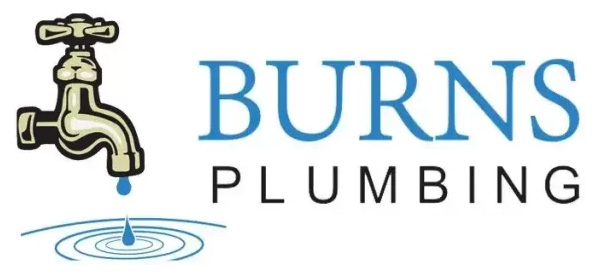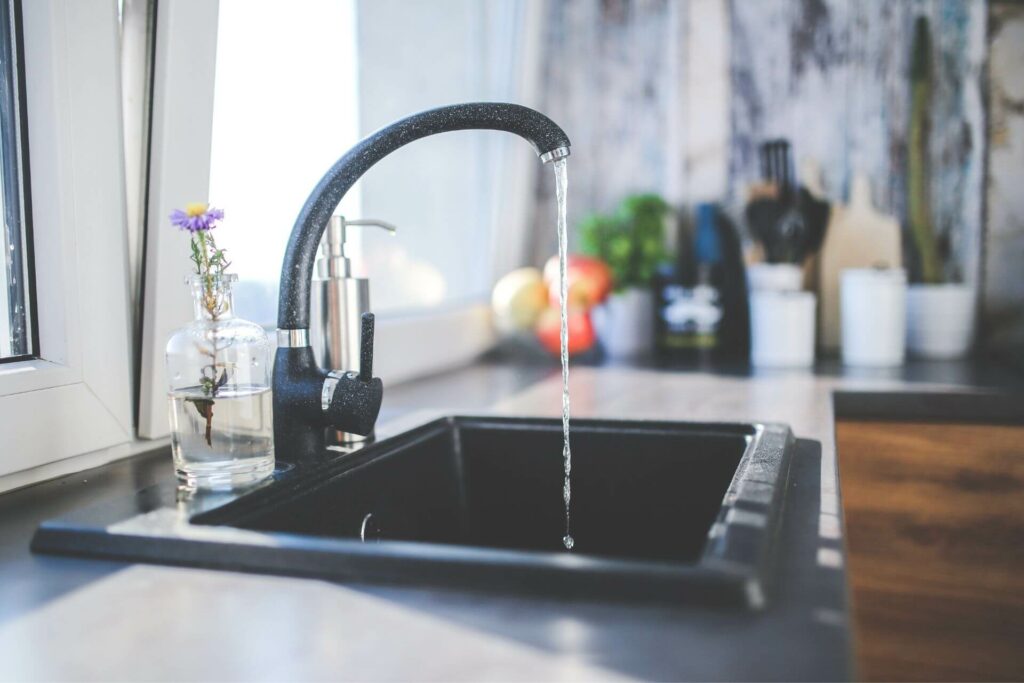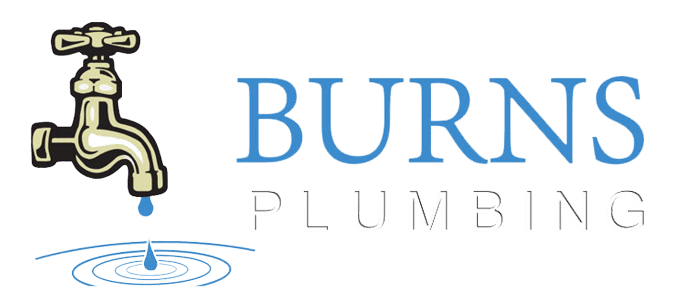Tackling a leaky tap is a quintessential DIY plumbing task that homeowners can often manage without calling in professional plumbing services. A dripping tap can waste a significant amount of water, leading to an increased water bill and potential water damage. With the right tools and a bit of know-how, fixing a leaking tap is a straightforward process that involves identifying the type of tap, diagnosing the cause of the leak, and replacing faulty components like the tap washer or jumper valve.
Identifying the Type of Leaking Tap
Before you can fix a leak, you need to know what type of tap you’re dealing with. Taps come in various designs, each with its own mechanism for controlling water flow:
- Compression Taps: These are the most traditional type, using a rubber washer that compresses against a valve seat to stop water flow. Identifying features include separate handles for hot and cold water that you turn to control water supply.
- Ceramic Disc Taps: Utilise two ceramic discs that slide over each other to regulate water flow. They’re known for their durability and are identified by a single lever or handle that controls both temperature and flow.
- Mixer Taps: Combine hot and cold water streams before they exit the faucet, usually operated by a single handle or lever. Mixer taps can use either compression or ceramic disc mechanisms internally.
- Ball-type Taps: Feature a single handle controlling a slotted ball that aligns with the water supply ports to adjust temperature and flow. They’re easily identified by their spherical cap just above the tap base.
Common Causes of Tap Leaks
Understanding why taps leak is essential for a successful repair. Common culprits include:
- Worn Washers: The rubber washer or O-ring can wear out over time, leading to leaks. This is particularly common in compression taps where the washer seals the water flow.
- Damaged Jumper Valve: Found in some compression taps, a damaged jumper valve can cause dripping. It’s a small part that lifts when the tap is turned on, allowing water to flow.
- Faulty Ceramic Disc Cartridges: In ceramic disc taps, leaks often occur when the ceramic discs wear out or accumulate debris, preventing a complete seal.
- Compromised Tap Bonnet: The tap bonnet, holding the spindle assembly in place, can become loose, leading to leaks around the tap handle.
- Corrosion or Damage to the Tap Body: Physical damage or corrosion to the tap body itself can lead to leaks, particularly around the base of the tap.
Tools and Materials You’ll Need to Fix a Leaking Tap
Fixing a leaking tap is a common DIY task that can save water and reduce your water bill. Whether you’re dealing with a garden tap, a bathroom tap, or any tap in your home, having the right tools and materials on hand is essential. Here’s what you’ll need:
- Adjustable Wrench or Tap Spanner: To loosen and tighten nuts and bolts on the tap.
- Tap Washer Set: Tap washers are usually 12mm and are crucial for replacing damaged or worn washers, a common cause of leaking taps.
- O-Rings and Tap Valves: For taps that may require more than just washer replacement.
- Screwdrivers: Both flathead and Phillips head, for removing tap handles or buttons.
- Tap Lubricant: Helps in reassembling the tap smoothly and ensures smooth operation.
- Tap Re-Seating Tool: If the tap seat is damaged, this tool can help smooth it out and prevent leaks.
- Cloth: To protect the tap’s surface when using wrenches or pliers and to clean up any spilled water.
- Plumber’s Tape: For resealing threaded connections and ensuring a watertight seal.
Step-by-Step Guide to Repair a Leaking Tap
Repairing a leaking tap can often be done in a few simple steps. Here’s a guide to get your tap fixed in no time:
1. Turn Off the Water Supply
Before beginning any repair work on a leaking tap, it’s crucial to stop the water flow to prevent flooding and facilitate a smooth repair process. Locate your home’s water main and shut it off. This will halt water supply to all the taps in your home, ensuring that when you open up the leaking tap, water doesn’t continue to flow through it.
2. Remove the Tap Handle
To access the internal components of the tap, you’ll need to remove its handle first. Many taps have a decorative cap or a screw on top that secures the handle in place. Carefully remove this cap or screw, then gently lift the handle off the tap’s spindle. Using a cloth can help protect the finish of the tap and provide a better grip.
3. Unscrew the Tap Bonnet and Dismantle
With the handle off, you’ll see the tap bonnet, which secures the internal components of the tap. Use your wrench or spanner to carefully unscrew this bonnet. Once removed, you can access the parts inside the tap, such as the washer and the jumper valve. Remember the order and orientation of these parts as you dismantle the tap, as they will need to be reassembled correctly.
4. Replace the Washer or O-Ring
Inspect the washer and O-ring within the tap. These are common culprits in leaking taps. If they appear worn or damaged, replace them with new ones from your tap washer set. Ensure that the new washer or O-Ring fits snugly and is appropriate for the type of tap you’re repairing. This step often resolves the issue of a dripping tap.
5. Turn On the Water Supply and Test
Once the tap has been reassembled with the new washer or O-Ring in place, it’s time to test your work. Carefully turn the water main back on to restore water supply to your home. Then, turn the repaired tap on and off a few times to ensure it operates smoothly and, most importantly, that it no longer leaks. Keep an eye out for any drips or leaks, and ensure the tap turns off completely.
6. Adjustments If Still Leaking
If you find that the tap is still leaking after your initial repair, there may need to be further adjustments. This could involve tightening the components a little more or checking for other issues, such as damage to the tap seat or problems with the internal valve. In some cases, applying a bit of tap lubricant can help improve the seal and smooth operation of the tap.
Fixing a leaking tap is often straightforward but requires attention to detail. If after following these steps your tap is still leaking, or if the repair seems out of your comfort zone, it might be time to call a professional plumber. For those trickier situations, or if you’re unsure about any step, professional plumbing services can ensure the repair is done correctly.
How to Replace a Washer in a Dripping Tap
Fixing a dripping tap is often a straightforward task that can save water and reduce annoying leaking noises. A common cause of a leaking tap is a worn-out washer that needs replacement. This simple repair can be done in a few easy steps, ensuring your tap functions properly without wasting water. Here’s how to replace a washer in a dripping tap:
1. Turn Off the Water Supply
Before you start, ensure the water supply to the tap is turned off completely. This can usually be done by turning off the valve under the sink or by shutting off the water main to prevent water from flowing while you work.
2. Remove the Tap Handle
The tap handle or button on top of your tap needs to be removed to access the internal components. This is typically done by unscrewing a visible screw on the handle or gently prying off a decorative cap to reveal the screw.
3. Unscrew the Tap Bonnet
With the handle removed, you’ll see the tap bonnet, which holds the tap’s internal parts in place. Use a wrench or tap spanner to carefully unscrew this component, exposing the body and spindle of the tap.
4. Replace the Washer
Once inside, locate the washer at the bottom of the spindle. It’s this small rubber component that often causes the tap to drip when it becomes worn or damaged. Remove the old washer and replace it with a new one of the same size, which you can find at any hardware store.
5. Reassemble the Tap
After the new washer is securely in place, reassemble the tap by screwing the tap bonnet back on. Ensure it’s tightened properly but not too tightly, as this can cause damage. Replace the tap handle and secure it with the screw or cap you removed earlier.
6. Test Your Tap
Turn the water supply back on and test your tap by turning it on and off a few times. Make sure there’s no leaking and that the tap turns off completely and operates smoothly.
Fixing a Ceramic Disc Tap
Ceramic disc taps are known for their durability and long life, but they can still develop leaks, usually due to worn-out ceramic discs. Fixing a ceramic disc tap involves replacing the cartridge inside the tap, as opposed to just a washer in traditional taps.
1. Identify the Problem
First, determine that the leak is indeed coming from the tap and not another part of your plumbing. A leaking ceramic disc tap usually means the cartridge inside needs replacement due to wear or debris.
2. Turn Off the Water Supply
As with any tap repair, start by turning off the water supply to stop the flow of water while you work.
3. Remove the Tap Handle
Remove the handle of the tap to access the cartridge. This may involve unscrewing a retaining screw or removing a cap to expose the screw.
4. Replace the Cartridge
Locate and remove the cartridge within the body of the tap. It may be held in place by a retaining nut that needs to be unscrewed. Once removed, replace it with a new cartridge of the same type and size, available at plumbing stores or hardware stores.
5. Reassemble and Test the Tap
With the new cartridge in place, reassemble the tap and turn the water supply back on. Check for leaks and ensure the tap operates smoothly, adjusting as necessary.
Adjusting the Tap Seat for a Leak-Free Fit
A leaking tap can often be traced back to a damaged tap seat, which prevents the washer from forming a tight seal. Adjusting or reseating the tap seat is a crucial step in ensuring a leak-free tap. Over time, the tap seat can become corroded or pitted, making it impossible for the new washer to prevent water from dripping. Here’s how to address this issue:
- Identify Tap Seat Condition: After removing the tap’s components, inspect the seat within the tap body for any damage or wear.
- Use a Tap Reseating Tool: This specialised tool helps to smooth out any imperfections on the tap seat, ensuring a flat surface for the washer to seal against.
- Follow Manufacturer Instructions: Each reseating tool might have specific instructions. Generally, insert the tool into the tap body and turn it to grind away any damage on the seat.
- Check for Smoothness: After adjusting, check the tap seat to ensure it’s smooth and free of pits or corrosion.
- Reassemble the Tap: Once satisfied with the tap seat’s condition, reassemble the tap and test for leaks.
Preventive Measures to Avoid Future Tap Leaks
Maintaining your taps can prevent leaks from developing, saving you from future repairs and reducing water wastage. Regular checks and simple maintenance can keep your taps in good working condition:
- Regular Cleaning: Keep your taps clean from mineral deposits and debris that can affect the tap’s function and lead to leaks.
- Inspect Washers and O-Rings Annually: Wear and tear on these parts are common causes of leaks. Replace them as necessary to prevent dripping taps.
- Lubricate Moving Parts: Use silicone-based lubricant on moving parts like the tap handle and spindle to ensure smooth operation and reduce wear.
- Avoid Over-Tightening: Turning taps off too tightly can wear out washers quickly. Turn the tap until it stops without applying excessive force.
- Check Water Pressure: Excessively high water pressure can stress your plumbing system, including taps. Ensure your water pressure is within the recommended range to prevent damage.
When to Call a Professional Plumber
While many tap leaks can be fixed with DIY methods, there are instances when professional help is needed:
- Complex Tap Designs: Some modern taps, especially those with ceramic disc mechanisms, may require specialised knowledge for repairs.
- Recurring Leaks: If a tap continues to leak after multiple repairs, there might be a more complex issue at play.
- Lack of Tools or Experience: If you’re missing the necessary tools or are unsure about the repair process, it’s safer to call a professional.
- Water Damage Concerns: If leaks have led to water damage or you’re concerned about potential damage, professional assessment and repair are advisable.
For reliable and efficient plumbing services, contact Burns Plumbing at (02) 9072 1165. Our experienced team can handle a range of plumbing issues, from simple tap repairs to complex plumbing problems, ensuring your system is leak-free and operating smoothly.


